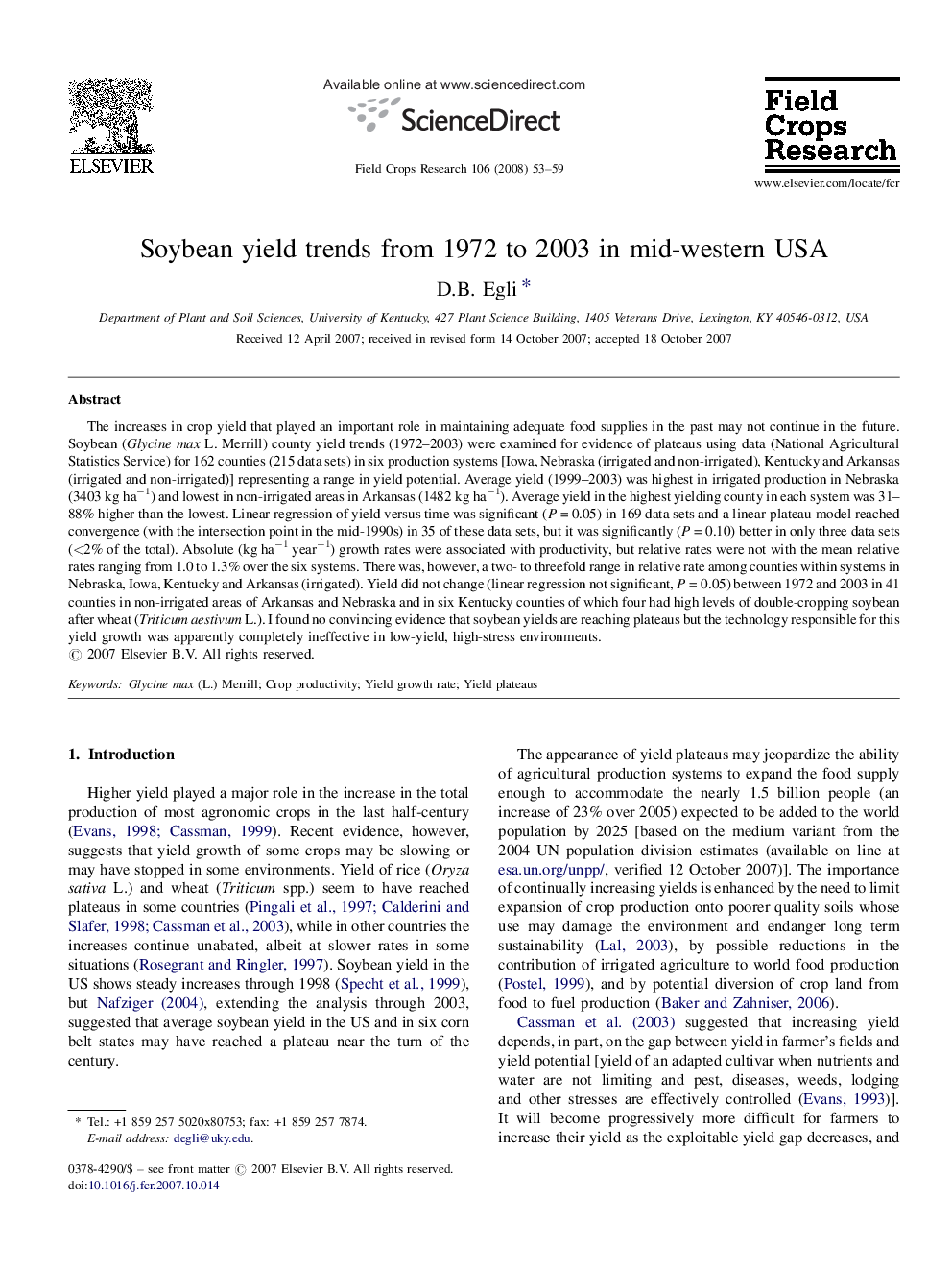| کد مقاله | کد نشریه | سال انتشار | مقاله انگلیسی | نسخه تمام متن |
|---|---|---|---|---|
| 4511465 | 1321913 | 2008 | 7 صفحه PDF | دانلود رایگان |
عنوان انگلیسی مقاله ISI
Soybean yield trends from 1972 to 2003 in mid-western USA
دانلود مقاله + سفارش ترجمه
دانلود مقاله ISI انگلیسی
رایگان برای ایرانیان
موضوعات مرتبط
علوم زیستی و بیوفناوری
علوم کشاورزی و بیولوژیک
علوم زراعت و اصلاح نباتات
پیش نمایش صفحه اول مقاله

چکیده انگلیسی
The increases in crop yield that played an important role in maintaining adequate food supplies in the past may not continue in the future. Soybean (Glycine max L. Merrill) county yield trends (1972-2003) were examined for evidence of plateaus using data (National Agricultural Statistics Service) for 162 counties (215 data sets) in six production systems [Iowa, Nebraska (irrigated and non-irrigated), Kentucky and Arkansas (irrigated and non-irrigated)] representing a range in yield potential. Average yield (1999-2003) was highest in irrigated production in Nebraska (3403 kg haâ1) and lowest in non-irrigated areas in Arkansas (1482 kg haâ1). Average yield in the highest yielding county in each system was 31-88% higher than the lowest. Linear regression of yield versus time was significant (P = 0.05) in 169 data sets and a linear-plateau model reached convergence (with the intersection point in the mid-1990s) in 35 of these data sets, but it was significantly (P = 0.10) better in only three data sets (<2% of the total). Absolute (kg haâ1 yearâ1) growth rates were associated with productivity, but relative rates were not with the mean relative rates ranging from 1.0 to 1.3% over the six systems. There was, however, a two- to threefold range in relative rate among counties within systems in Nebraska, Iowa, Kentucky and Arkansas (irrigated). Yield did not change (linear regression not significant, P = 0.05) between 1972 and 2003 in 41 counties in non-irrigated areas of Arkansas and Nebraska and in six Kentucky counties of which four had high levels of double-cropping soybean after wheat (Triticum aestivum L.). I found no convincing evidence that soybean yields are reaching plateaus but the technology responsible for this yield growth was apparently completely ineffective in low-yield, high-stress environments.
ناشر
Database: Elsevier - ScienceDirect (ساینس دایرکت)
Journal: Field Crops Research - Volume 106, Issue 1, 27 February 2008, Pages 53-59
Journal: Field Crops Research - Volume 106, Issue 1, 27 February 2008, Pages 53-59
نویسندگان
D.B. Egli,